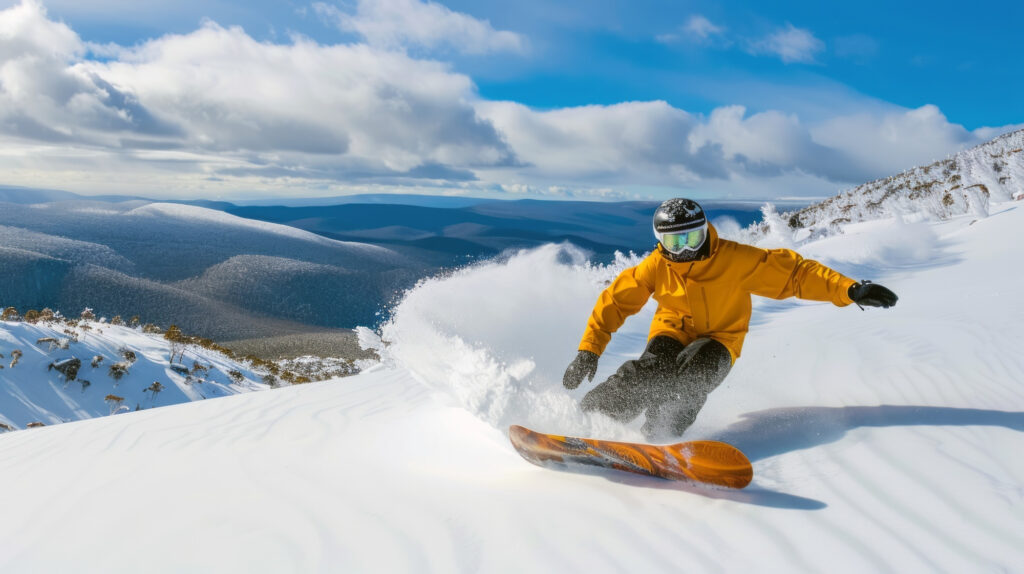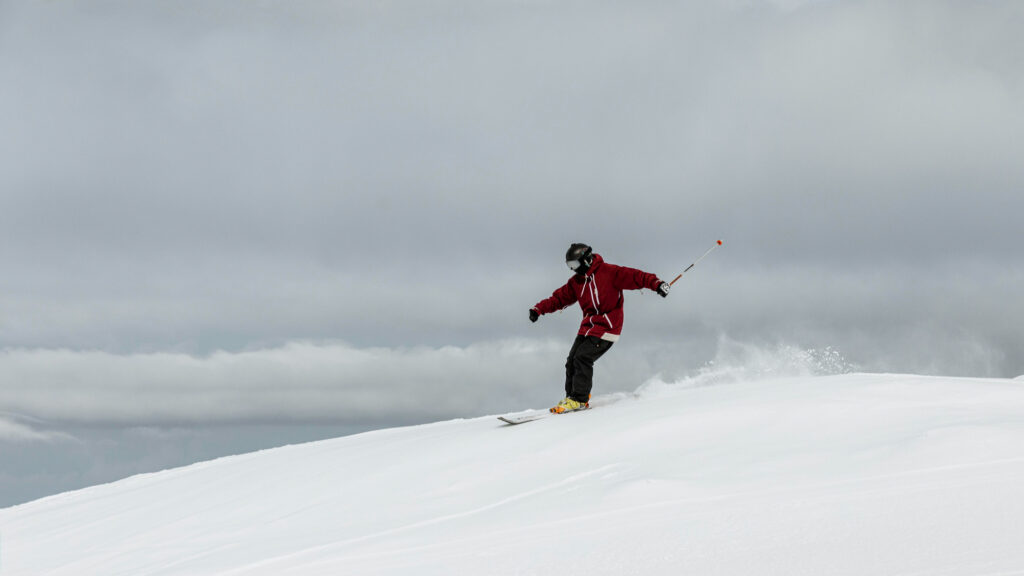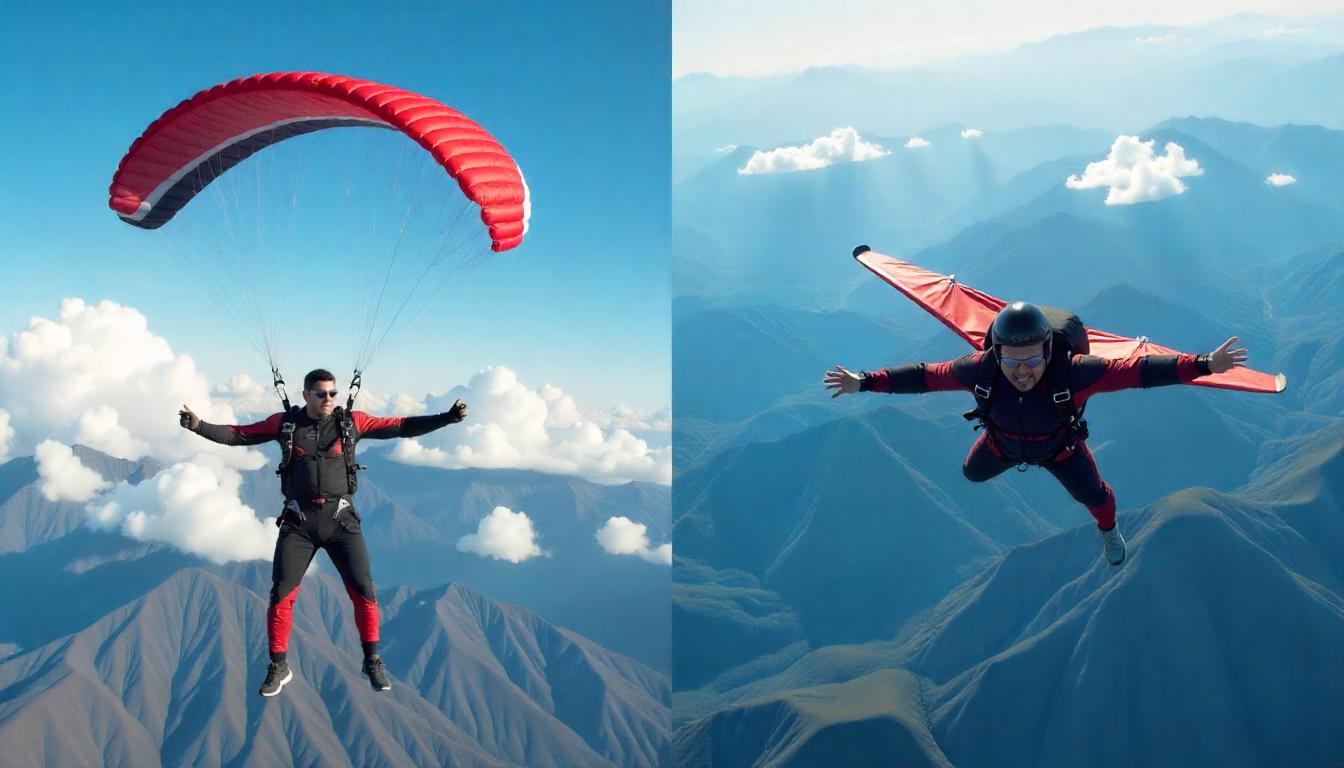To tell “Freeride Skiing” and “Extreme Skiing” apart, look at how off-piste skiing changed over time. Style, land, and how skiers act all matter. Freeride skiing is about picking your own path. Think smooth turns and tricks in open areas, commonly found in backcountry skiing. Extreme skiing often means steep slopes and high risks, as it could involve tight chutes or cliff drops. This style needs skill and control, especially when considering vital aspects like avalanche safety. Freeride is about freedom and flow, while extreme is more about pushing limits. Gear also shows the split; freeride skis work well in all snow, while extreme skis are built for tough slopes. Knowing these points helps skiers pick their style while also building respect for the ski terrain.

Core Concepts
Off-piste skiing, known as freeride skiing or extreme skiing, happens away from groomed trails. This is what makes it different from regular skiing. Skiers seek out untouched areas, facing nature that changes fast. For instance, there might be soft snow and icy spots on the same run. Skiing down means dealing with the unknown, with hidden rocks and shifting conditions, which are crucial for mastering off-piste techniques. Good instincts and being quick to adapt are key, as each run mixes risk and excitement. Yet, off-piste skiing is more than just excitement; it builds deep respect for mountains. Skiers become very aware of nature and its dangers.
This sport offers thrilling moments while creating a strong link to the raw beauty of nature. For some, off-piste skiing is not a hobby; it becomes a calling that fills them as they navigate through powder skiing’s whims. The quiet of the mountains and the test of the slopes draw them in. They find a sense of freedom that is hard to find anywhere else. Every turn in the snow feels like a personal win.
Freeride Skiing

Emphasis on Flow and Creativity:
Freeride skiing is more than just a physical sport—it’s a form of self-expression that highlights smooth movement and imaginative style. Skiers treat the mountain like their canvas, using its natural features to showcase their individuality. Every turn, jump, and carve becomes a distinct mark, creating a one-of-a-kind visual story with every run. For many, it’s not simply about making it to the bottom; the way they interact with the mountain along the way matters most. The chosen lines, the unique flair, and the precision in their movements mirror each skier’s personality and passion for the sport. This mindset encourages skiers to push their limits and try new techniques, constantly finding innovative ways to conquer the snow.
Terrain Variety:
What makes freeride skiing especially thrilling is the sheer variety of terrain it offers. Skiers might find themselves slicing through waist-deep powder in a bowl one day and weaving through dense trees the next. They could charge down steep, open faces or launch off boulders and natural jumps scattered across the slopes. Each type of terrain has its own quirks, demanding quick thinking and adaptability. For example, navigating tight tree lines requires sharp turns and quick reflexes, while wide-open powder fields call for smooth, flowing movements to stay afloat. This constant shift in environment keeps the experience dynamic and challenging. Every run feels fresh, with new opportunities to creatively approach the mountain.

Focus on the Descent:
While some climbing or hiking might be necessary to reach prime areas, the real magic happens on the way down. Freeriders live for the descent, where they channel all their skill and creative energy into their path. Each run becomes an electrifying performance, balancing technical precision with personal flair. It’s not just about going fast. The descent is about finding rhythm, linking each turn with purpose, and making every moment memorable. This transforms an ordinary ski run into something extraordinary—a ride filled with personality and skill that feels like it belongs to the skier alone.
Modern Context:
Freeride skiing has exploded in popularity in recent years, partly thanks to events like the Freeride World Tour. These competitions showcase not only the athletic ability needed to tackle extreme terrain but also the artistry involved in choosing and riding unique lines. Competitors blend power and grace while exploiting various ski descents, making each run a testament to their creativity. This new spotlight has inspired younger skiers to take up freeriding, experimenting with bold styles and innovative approaches to the sport. With this growing visibility, the freeride community continues to evolve, shaping a new wave of inspiration and progression in skiing.

Equipment:
Freeride skiing demands gear designed to meet the sport’s unpredictable conditions. Skis are typically wider to float better in powder but still versatile enough to grip firm snow or mixed terrain. This balance is essential for handling the challenges of variable off-piste runs. Having the right equipment doesn’t just make skiing easier—it’s key to fueling confidence and creativity on the mountain. Well-chosen gear allows skiers to focus on their performance without worrying about their tools, letting them truly immerse themselves in the freedom and excitement of freeride skiing. With thoughtfully designed equipment, riders can tackle whatever the mountain throws at them with both skill and style.
Extreme Skiing:

Extreme skiing is an intense and challenging sport characterized by its emphasis on technical and steep skiing. Skiers tackle the most difficult slopes possible, encountering distinct challenges that make it stand out from regular skiing. This thrilling activity tends to include skiing down very steep couloirs, extremely exposed faces, and the constant threat of cliff drops, greatly increasing the thrill and risk involved in the sport.
In this risky terrain, the tolerance for mistakes is very low compared to what you’d encounter on a groomed run. Due to this, extreme skiing demands not only superior skill and loads of experience but also the keen power to evaluate hazards in real time. Competitors need to remain perceptive for surprise obstacles and possess the mental acuity to make instantaneous decisions when confronted with risk.
The phrase “extreme skiing” became popular in the late 20th century when thrill-seeking pioneers began testing the boundaries of what was possible on skis. These early explorers, fueled by their passion for adventure, redefined the sport and inspired a new generation of skiers to take on the ferocity of the descent. The activity has become increasingly hardcore in its nature, with its practitioners specifically seeking out challenges that really push their limits and boundaries. The grounds they have to traverse are commonly steep and peppered with natural hazards, calling for not only physical vigor but also immense mental toughness to get through unscathed.
The culture of extreme skiing has grown into a close community of devoted people who are equally enthralled by the extremity and unpredictability of the sport. They celebrate their search for adrenaline in ways that transcend ski vacations, and their friendships go beyond weekends on the slopes. They rely on one another for support and protection when skiing in risky conditions because they know skiing in such situations is precarious.
Finally, extreme skiing is the very height of challenge and adventure in winter sports. It draws out those willing to move beyond the norm and plunge into the extreme, providing a sense of unparalleled freedom and fulfillment for anyone strong enough to accept its daunting challenge. Are you up for conquering the slopes?

Key Differences Summarized
Terrain:
Freeride skiing involves diverse off-piste terrain. Skiers move through natural terrain, including powder skiing, glades, and rolling hills. They also traverse steep mountainsides. Extreme skiing contains extremely steep and dangerous terrain that often features cliffs and thin chutes, demanding excellent skill from the skier.
Style:
Freeride skiing has a loose and creative style. Skiers express themselves through various movements and tricks, often utilizing off-piste techniques. Extreme skiing requires a very precise style where control is paramount when maneuvering dangerous terrain. Success in extreme skiing involves getting through danger unharmed.

Risk:
Freeride skiing is dangerous, but it is usually controllable, making the sport a pleasure to engage in. Extreme skiing is dangerous by definition, with the potential for extensive injury. Precautions, knowledge, and experience are essential.
Evolution of Terms:
“Freeride” is the general usage now, encompassing many types of off-piste skiing, including backcountry skiing and ski mountaineering. “Extreme skiing” is still around, but less frequently and refers to the most challenging and perilous type of the sport, often suggesting danger runs and action challenges.




